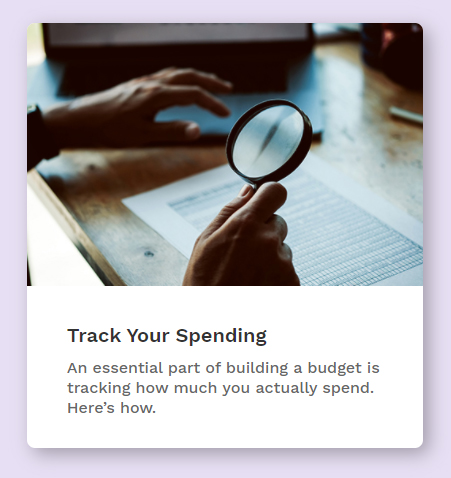Execute Your Spending Plan
Step 5 of building your household budget.
Step 5: Put Your Spending Plan into Action
You’ve set goals, identified your income and expenses, determined how much to save for seasonal expenses, and made choices around needs and wants. Take another look at your Budget Worksheet and fill in any revised monthly amounts that may still be missing. Now it’s time to put your plan into action!
Use a pay cheque plan to match your spending patterns to your income schedule. If you are paid every two weeks, then align your spending to a two-week schedule; if monthly, then a monthly schedule. Use this Pay Cheque Planning Worksheet on page 9 to help you get started:
- In the budget column, record what you need to spend. Money that you set aside in a savings account is an expense that you deduct from your income.
- Note your pay dates across the top.
- If you have money in your bank account that you need for this month’s expenses, note that as income for this month as well. Don’t forget to subtract any cheques you have written that have not cleared your account yet.
- Record your net pay cheque amount for each pay date. List any other income you receive during the month in the week you will receive it.
- Decide when the expenses from your budget column will be paid. This will depend on your pay dates. Start with expenses that are due on specific dates, e.g. rent, hydro or car insurance. Try to balance the expenses evenly throughout the month.
- Total your income from each pay period and if there is any left over, add it to your savings account. If you are short, re-examine your expenses to see what you are able to reduce or evaluate if you are able to increase your income.
Irregular Income
Not everyone has a steady job with a steady paycheque. You may have seasonal work, be self-employed or you may be on commission. In these cases, you can’t count on money coming in on a regular basis. That doesn’t mean that you can’t create a budget, but it does mean that you need to plan in more detail. Part of the planning process must include a separate savings account for income tax payments at the end of the year. And if you are self-employed, you must take deliberate steps to separate your personal and business finances.
If you have had irregular income for a few years, one strategy is to calculate the average net income you’ve had per year for at least 3 years, divide by 12 and use that amount to build your current budget. If this amount is not enough to meet your expenses, you must consider how you can increase your income or decrease your expenses to make your budget balance.
Another way to build a budget if you have irregular income is to set up a holding account. All of your income is deposited into the holding account. You pay yourself a monthly amount based on what you have identified you can afford and what will allow you to meet your obligations. During months of higher income, the holding account will have a larger balance. During the leaner months, the holding account balance will decrease. However, the amount you pay yourself does not vary from month to month.
The holding account method also works well for students. If you have a sum of money saved from employment, or if you receive a lump sum of student loan funding, set it all aside in a separate account so that you don’t spend it all at once. Pay yourself a monthly or weekly amount to meet your obligations. You may also choose to supplement your weekly amount with part-time income while you are attending school. This will not only beef up your resume, but can lower your long-term educational costs as well.
A third way to deal with irregular income is to have two budgets, one for the better months and one for the leaner months. For most people, this is the hardest way to manage their money effectively because it’s easy to get into a spending habit during the better months and then feel deprived during the leaner months. People are tempted to spend because they expect to have money again in the better months ahead. Then they use credit to supplement their leaner times. As a result, they develop a debt cycle that becomes expensive and difficult to break.
Next Up: Seasonal Expenses
You know that things will “just come up” – school expenses, new shoes or an annual membership. Set money aside to pay for these expenses so you can afford them without going into debt.
Next Up: Seasonal Expenses
You know that things will “just come up” – school expenses, new shoes or an annual membership. Set money aside to pay for these expenses so you can afford them without going into debt.
Related Topics

Workshops & Webinars
In-person or online, learn about credit, debt, and money. Ask questions and get the best tips!
Track Your Spending
An essential part of building a budget is tracking how much you actually spend. Here’s how.

Credit Counselling
Are you curious about what credit counselling is or how it works? Here’s what you need to know.



